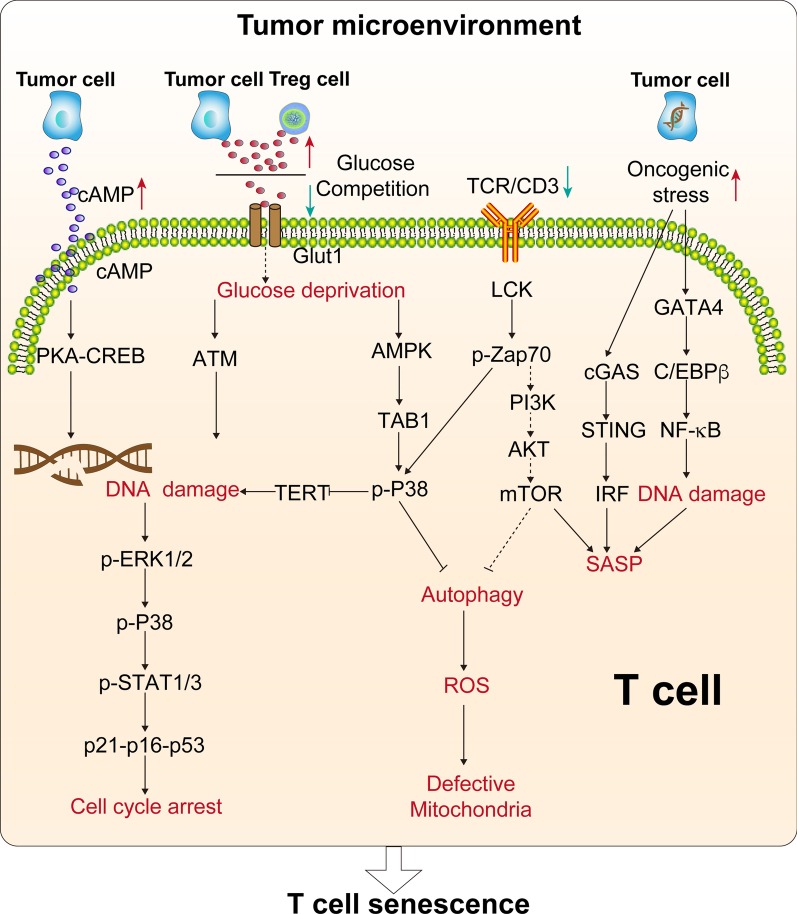Fig. 3.
T cell senescence-related signaling pathways. Tumor-derived cAMP can be transferred to T cells, activating the PKA-CREB signaling pathway, which in turn activates DNA damage and induces T cell senescence. T cell competition for glucose triggers ATM-related DNA damage, activates the ERK1/2 and P38 pathways, and interacts with STAT1/3, which leads to T cell cycle arrest and aging. Activation of the P38 pathway induces the downregulation of TERT, leading to DNA damage. The downregulation of TCR signaling can activate the P38 pathway and inhibit the PI3K-AKT-mTOR signaling pathway, thereby inactivating autophagy and inducing mitochondrial dysfunction and ROS production in senescent T cells. DNA damage induced by the GATA4-C/EBPβ signaling pathway leads to increased secretion of SASP molecules. Similarly, the cGAS-STING signaling pathway also leads to increased secretion of SASP molecules

